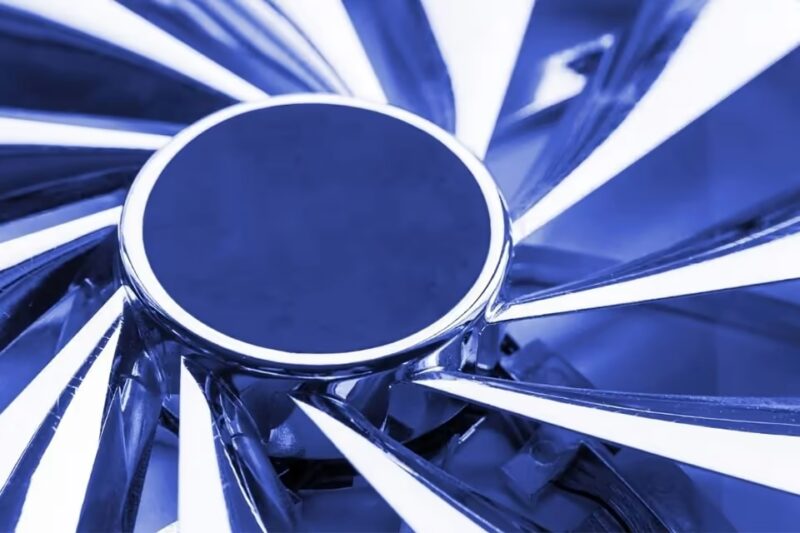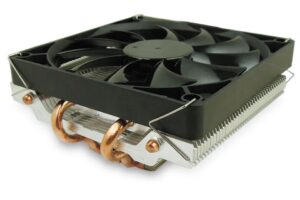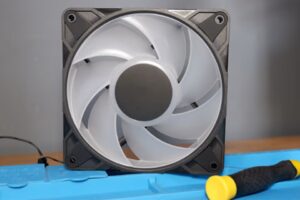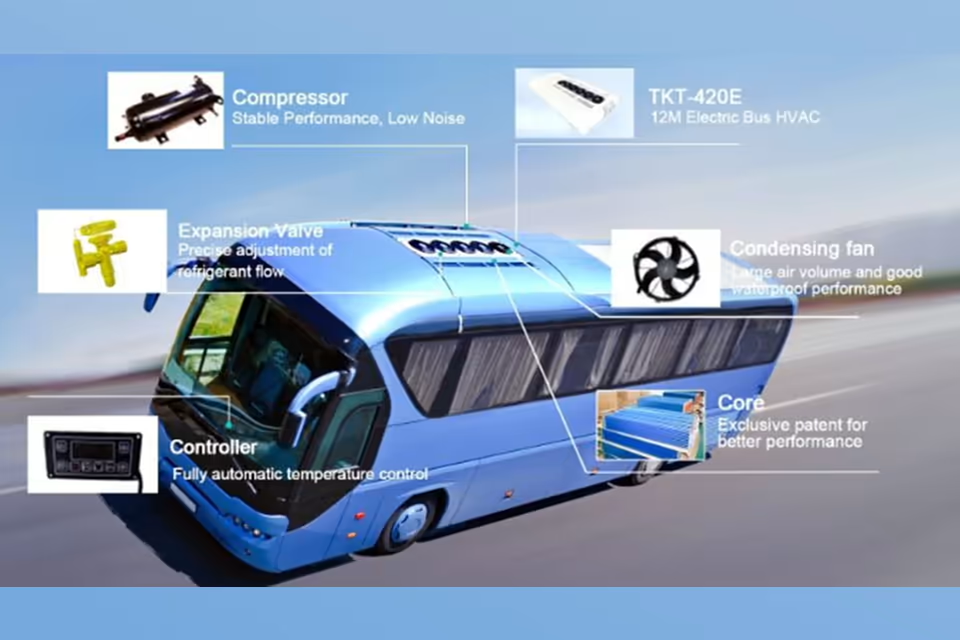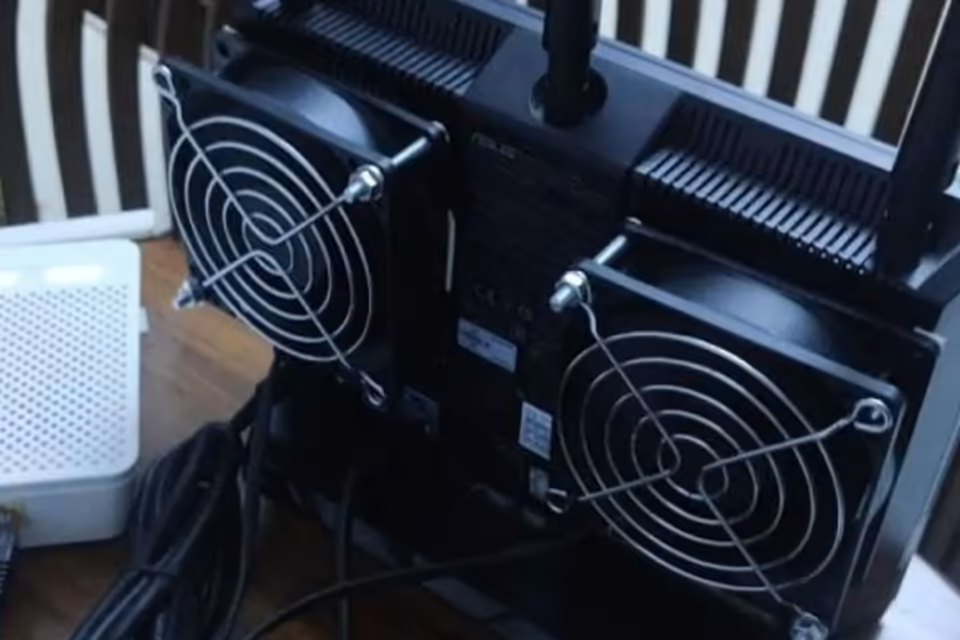냉각 팬은 전자 제품부터 산업 기계에 이르기까지 모든 것의 온도 조절에 필수적이지만, 팬이 발생시키는 소음은 중요한 문제입니다. 시끄러운 팬은 편안함과 생산성을 방해하고 브랜드 평판을 손상시킬 수도 있으므로, 조용한 작동은 제조업체에게 우선순위입니다.
팬 소음의 주요 원인은 기계적 문제, 공기 흐름 문제, 진동, 설계 결함의 네 가지 영역에서 비롯됩니다. 베어링과 같이 마모된 부품은 갈리는 소리나 덜거덕거리는 소리를 유발할 수 있으며, 막힌 공기 흐름은 시끄러운 난류를 생성합니다. 부적절한 장착은 소리를 증폭시키는 진동으로 이어집니다. 이러한 근본 원인을 이해하는 것은 소음 문제를 해결하고 완화하는 데 중요하며, 이는 궁극적으로 팬의 성능과 수명을 향상시킵니다.
다행히도 기술 발전은 해결책을 제시합니다. 공기역학적 블레이드 설계, 온도에 따라 속도를 조절하는 스마트 팬 기술, 그리고 간단한 예방적 유지보수와 같은 현대적인 접근 방식은 팬을 더 조용하고 효율적으로 만들고 있습니다.

냉각 팬의 종류
냉각 팬은 설계 방식과 공기를 이동시키는 방식에 따라 분류되며, 이는 팬의 소음 수준과 최적의 사용 사례에 직접적인 영향을 미칩니다.
Axial Fans
축류 팬은 팬의 중심 축과 평행하게 공기를 직선으로 이동시킵니다. 이들의 더 간단한 설계는 일반적으로 특히 낮은 속도에서 더 조용하게 작동할 수 있도록 합니다. 이는 개인용 컴퓨터, 전자 제품 및 실내 환기와 같이 소음이 중요한 주거 및 상업용 애플리케이션에 이상적인 선택이 됩니다.
Centrifugal Fans
Centrifugal fans, also known as blowers, draw air in at the center and expel it at a 90-degree angle (radially). This design can generate much higher air pressure, making them perfect for demanding environments like HVAC systems and industrial machinery that need to move large volumes of air through ducts and filters. However, this power comes at a cost, as they are typically louder than axial fans.
냉각 팬 소음의 일반적인 원인
Fan noise can be traced back to a handful of common issues. Pinpointing the cause is the first step toward finding a solution.
기계적 문제
Physical wear and tear is a leading cause of fan noise. Over time, fan bearings can wear out, producing a grinding, whining, or rattling sound. Similarly, if a fan blade becomes loose, damaged, or unbalanced, it will create wobbling and significant noise during operation.
공기 흐름 제한 및 난류
Smooth, unobstructed airflow is quiet airflow. When this flow is disrupted, it creates turbulence, which we hear as noise. This can be caused by anything from dust buildup on the blades to poorly placed components or grilles that block the air path. The design of the blades themselves is also critical; blades that aren’t aerodynamically optimized will slice through the air inefficiently, creating noisy pressure fluctuations.
진동
Vibrations are a major source of rattling and humming noises. Most often, this is caused by a fan that is not securely mounted. Loose screws or an ill-fitting housing allow the entire fan assembly to vibrate against its frame, turning a small operational hum into a much louder and more annoying noise.
설계 요인
A fan’s inherent design plays a huge role in its noise output. Fans with aerodynamically shaped blades that promote smooth (laminar) airflow are naturally quieter. The type of bearings used also makes a difference; ball bearings tend to be quieter and last longer than traditional sleeve bearings due to lower friction.
소음 문제 진단
Systematically identifying the source of fan noise makes it much easier to fix.
진단 단계
Listen and Inspect:
Start by listening closely to the type of noise. Is it a high-pitched whine, a low hum, or a rattling click? Note when it occurs—at startup, under heavy load, or constantly. Then, perform a visual inspection. Look for obvious issues like dust buildup, loose screws, or damaged blades.
Clean and Maintain:
Often, the simplest solution is the most effective. Dust and debris are common culprits. Turn off the device and carefully clean the fan blades and housing with compressed air. While inspecting, ensure all mounting screws are tight to eliminate vibrations. Sometimes, older fans may require a small amount of lubrication on the motor bearing to resolve grinding noises.
Test Fan Performance:
If cleaning doesn’t solve the issue, monitor the fan’s speed using software tools. Consistently high speeds may indicate that the device is overheating, forcing the fan to work harder than necessary. This could point to a deeper issue, such as old thermal paste on a CPU or a failing sensor.
해결책 및 완화 전략
Addressing fan noise involves a combination of smart maintenance and leveraging modern technology.
예방적 유지보수
Regular maintenance is the most effective way to keep fans running quietly. This includes cleaning the blades and housing to prevent dust buildup, checking for and tightening any loose components, and lubricating bearings annually if the design allows. A consistent maintenance schedule extends a fan’s lifespan and ensures it operates efficiently.
기술 혁신
Recent advancements in fan design have led to significant improvements in noise reduction.
- Aerodynamic Blade Designs: Engineers are now creating blades with refined shapes and curved profiles that optimize airflow and minimize turbulence. Some designs are even inspired by nature, such as blades modeled on the silent flight of owl wings.
- Smart Fan Technology: Modern fans often include sensors and IoT capabilities to adjust their speed dynamically based on real-time temperature data. This ensures the fan only runs as fast as necessary, saving energy and reducing noise.
- Improved Materials and Motors: The use of high-quality, low-friction materials and advanced, energy-efficient motors contributes to both quieter operation and greater overall sustainability.

